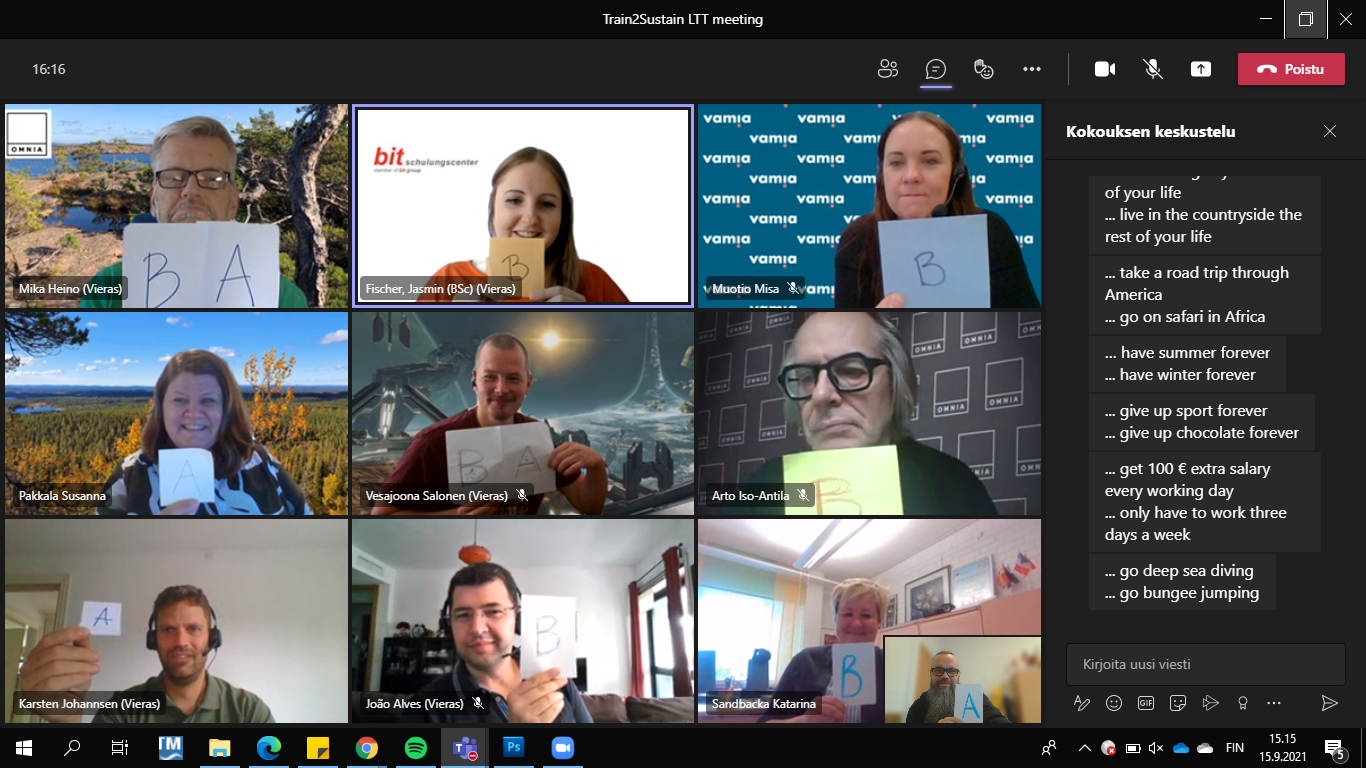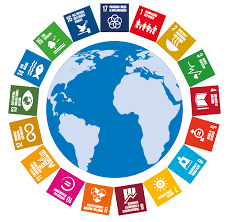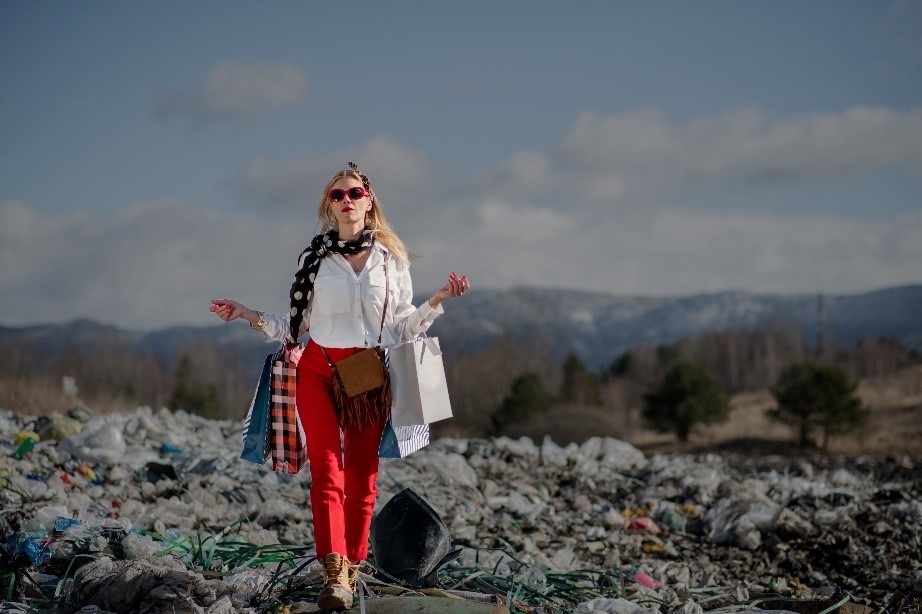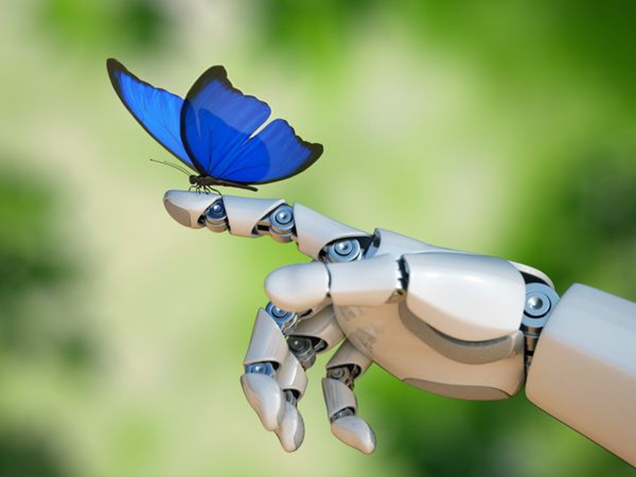
The contribution of Artificial Intelligence to Sustainability
When we hear about Artificial Intelligence, we can immediately associate it with concepts such as technology, innovation, automation, robotics, efficiency, and even possibly the replacement of human beings.
Artificial Intelligence (AI) is a technology that is part of the Computer Science area and is understood as the development of machines with the ability to learn, which are programmed in advance, making use of well-elaborated and complex algorithms that provide decision-making and problem solving, extrapolations and even interactions based on the data provided (Damaceno and Vasconcelos, 2018). In a more simplified way, we can consider that one of the goals of AI is the development of machines that carry an intelligent behavior, very similar to human behavior, so that they can act in complex environments (Nilsson, N., 1998).
But how can we use AI to ensure a more sustainable future? Is there really a relationship between AI and Sustainability?
Being considered as a rapidly evolving technology, AI can provide several economic and social benefits, both for industry and for social activities, and can be used as an essential tool to promote Sustainable Development and thus contribute to a more sustainable society.
As such, in 2018 the European Commission presented the “Coordinated Plan for Artificial Intelligence”, highlighting the importance of promoting the development and use of AI in Europe and reinforcing excellence in AI technologies and applications, to face emerging trends. Additionally, recommended the development of state-of-the-art applications to overcome the world’s biggest challenges, in which the fight against climate change is highlighted (Council of the European Union, 2018).
Therefore, the concept of ecological technology arises as a result of the transformations of the Fourth Industrial Revolution (4IR) based on digital technologies (figure 1), among which AI stands out, which allows, for example, in the environmental management of industry, to change production methods, allowing the reduction of different types of waste and emissions, which consequently represent a lower impact on the environment, thus contributing to greater sustainability.
It should be noted that 4IR arises as a response to the need to increase quality and efficiency and even Sustainability.
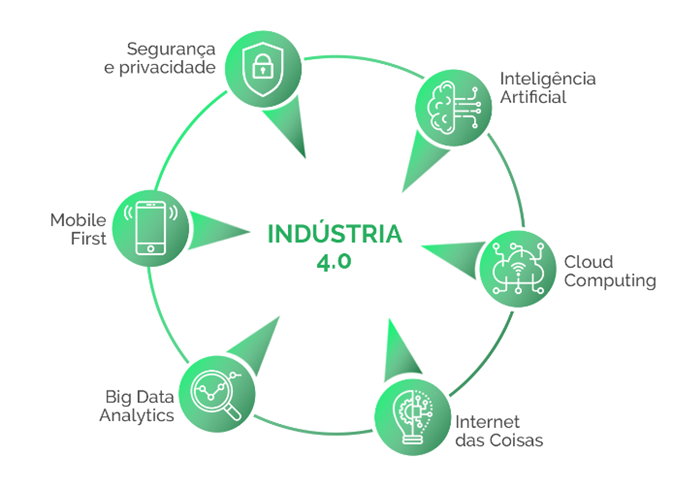
Tools applied to 4IR
Source: https://www.bytebio.com/blog/o-que-e-industria-4-0
If in the previous paragraph we refer to the industry, it is important to highlight that the human being is also positioned at the center of technological transformation.
Society 5.0 is a proposal for a model of social organization, developed in Japan, and amplified by the 4IR concept itself. It seeks to balance economic progress with solving social problems, using intelligent and enabling technologies (figure 2), such as AI, where physical space is integrated with virtual space. Thus, this concept is based on three pillars: Quality of life, Inclusion and Sustainability.
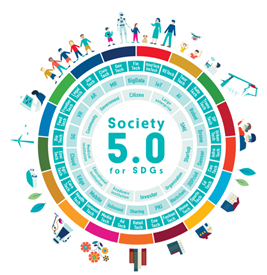
Smart technologies that will respond to the
Sustainable Development Goals. Source: https://www.gpif.go.jp/en/investment/Report_Society_and_SDGs_en.pdf
As environmental responsibility is everyone’s duty, it is essential that there is a harmonious interaction.
Thus, AI incorporates five dimensions of Sustainability (Khakurel et al., 2018): social, economic, individual, technical and environmental. For Sustainable Development to materialize, it will be necessary to practice actions that include all these dimensions (figure 3).
| Social | It works to protect cultural diversity, guarantee the full exercise of human rights and combat social exclusion |
| Economic | Seeking a balance between the continuous production of goods and services and the fair distribution of wealth |
| Individual | Individual freedom and agency (ability to act in the environment), human dignity and achievement |
| Technique | Ability to maintain and develop artificial systems such as software over time |
| Environmental | Preservation and care of the environment |
Figure 3
Source: Diagram of sustainability analysis of the field of artificial intelligence (AI) according to the five dimensions of sustainability. (Khakurel et al., 2018) and Sustainability and its dimensions (Iaquinto, 2018)
In order to ensure that AI is used in a safe and law-abiding way, including with regard to the respect of fundamental rights, a proposal for a regulation establishing harmonised rules on AI has been drafted (Regulation of the European Parliament and of the Council laying down harmonised rules concerning Artificial Intelligence – Artificial Intelligence Regulation – and amending certain Union legislative acts, 2021).
A successful example – Henkel
The Henkel Ibérica factory was awarded for the second time as “Advanced 4th Industrial Revolution Lighthouse”, by the Laundry & Home Care production unit of Henkel Ibérica in Montornès del Vallès, Barcelona, as a model factory and pioneer in Industry 4.0 (Henkel).
In order to strengthen the digital ecosystem, the unit began to implement AI algorithms with the aim of prescribing actions to ensure flawless operations on the production line, using historical data.
In 2013 the factory developed a unique cloud data platform called Digital Backbone to digitize the supply chain.
The Digital Backbone collects and analyzes, in real time, the data of each individual step of the process of each machine, equipped with sensors and micro cameras that monitor all the actions performed on the production line. This process allows production teams to identify defects or errors at an early stage, increasing production line efficiency.
Regarding Sustainability, the Digital Backbone measures resource consumption in real time and alerts through automatic notifications whenever a machine consumes more energy or water than the company’s reference level. The elimination of paper was also possible, with its replacement by electronic processes that are coordinated by the Digital Backbone.
Keeping employees safe is also a priority for the unit, which seeks to prevent accidents with forklifts. To this end, electronic alert zones are created, supported by the Digital Backbone, where employees use a badge that automatically warns the forklift to stop when the employee approaches within a certain distance.
As stated by Carsten Knobel, CEO of Henkel,
“Digitalization is a key element of our strategy for intentional growth. And Industry 4.0 is an important pillar of our digital transformation journey, enabling us to leverage sustainability across the value chain and helping us meet our ambitious goal of becoming a 100% climate-friendly company by 2040.”
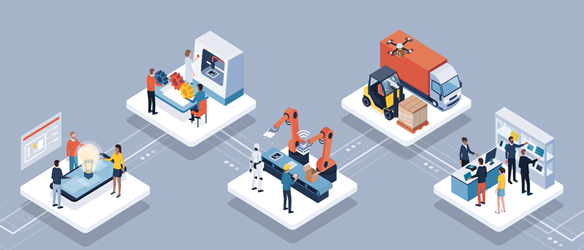
A digital backbone
Source: https://www.henkel-northamerica.com/spotlight/2020-01-02-a-digital-backbone-1010628
Bibliography
Damaceno, S. & Vasconcelos, R. (2018). Inteligência Artificial: Uma breve abordagem sobre seu conceito real e o conhecimento popular. Cadernos de Graduação. Available at https://periodicos.set.edu.br/cadernoexatas/article/view/5729/2966
Russo, I. (2020). O Impacte da Inteligência Artificial na Sustentabilidade Ambiental: Uma Agricultura Sustentável. Dissertação final de Mestrado em Gestão de Sistemas de Informação. ISEG. Available at https://www.repository.utl.pt/bitstream/10400.5/21023/1/DM-IFDR-2020.pdf
Khakurel, J. et al., (2018). The Rise of Artificial Intelligence under the Lens of Sustainability. Technologies 2018. Disponível a partir de https://www.researchgate.net/publication/328653902_The_Rise_of_Artificial_Intelligence_under_the_Lens_of_Sustainability/link/5bddd596299bf1124fb95fab/download Available at https://www.mdpi.com/2227-7080/6/4/100/htm
Iaquinto, B. (2018). A Sustentabilidade e suas dimensões. REVISTA DA ESMESC, v.25, n.31. Available at https://www.revista.esmesc.org.br/re/article/viewFile/187/161
Plano coordenado europeu para a Inteligência Artificial (2019). Conselho Europeu. Conselho da União Europeia. Available at https://www.consilium.europa.eu/pt/press/press-releases/2019/02/18/european-coordinated-plan-on-artificial-intelligence/
Betti, F., Boer, E. & Giraud, Y. (2021). Empresas faróis melhoram sua sustentabilidade com tecnologias da Quarta Revolução Industrial. MCKinsey & Company. Available at https://www.mckinsey.com/business-functions/operations/our-insights/lighthouses-unlock-sustainability-through-4ir-technologies/pt-BR
Teixeira, A. et al., (2020). Sustentabilidade tecnológica: o papel das tecnologias digitais na promoção do desenvolvimento sustentável. Edição comemorativa de uma década do Mestrado em Direito da União Europeia da Universidade do Minho. Available at https://repositorium.sdum.uminho.pt/bitstream/1822/66584/3/Sustentabilidade%20Tecnologica_Edicao%20Comemorativa%20MDUE.pdf
Werner, D. (2019). A Quarta Revolução Industrial e a Inteligência Artificial: um estudo sobre seus conceitos, reflexos e possível aplicação no Direito por meio da análise de texto jurídico como forma de contribuição no processo de categorização preditiva de acórdãos. Universidade do Vale do Rio dos Sinos. Unisinos. Unidade Acadêmica de Pesquisa e Pós-Graduação. Programa de Pós-Graduação em Direito. Nível de Mestrado Profissional. Available at http://www.repositorio.jesuita.org.br/bitstream/handle/UNISINOS/8949/Deivid%20Augusto%20Werner_.pdf?sequence=1&isAllowed=y
Naves. I, (2020). Indústria 4.0: Inovações Tecnológicas Aplicadas à Engenharia de Processos. Universidade Federal Uberlândia. Faculdade de Engenharia Química. Curso de Graduação em Engenharia Química. Available at https://repositorio.ufu.br/bitstream/123456789/31673/3/Ind%c3%bastriaInova%c3%a7%c3%b5esTecnol%c3%b3gicas.pdf
Henkel (2021). Available at https://www.henkel.pt/imprensa-e-comunicacao/comunicados-de-imprensa/2021-03-15-fabrica-da-henkel-iberica-e-a-primeira-global-lighthouse-reconhecida-pelo-world-economic-forum-1160354
Henkel (2020). Available at https://www.henkel-northamerica.com/spotlight/2020-01-02-a-digital-backbone-1010628
The author:

Ana Paula Lopes
Development and Pedagogical Coordination
ATEC – Academia de Formação ana.lopes@atec.pt

